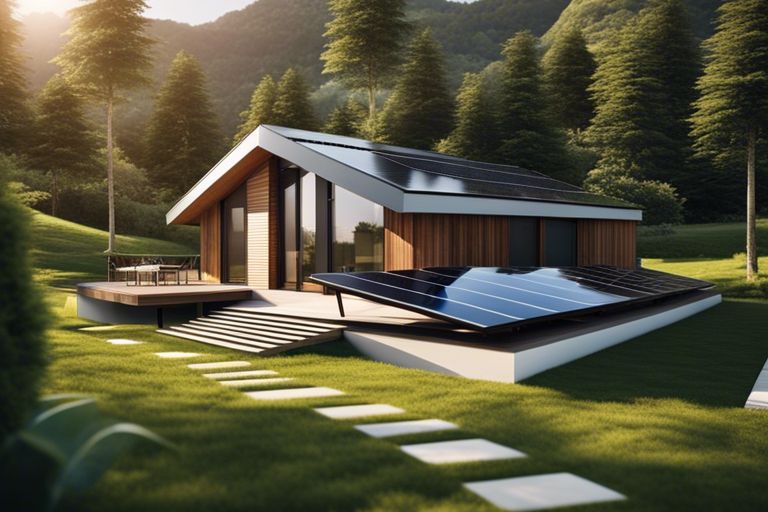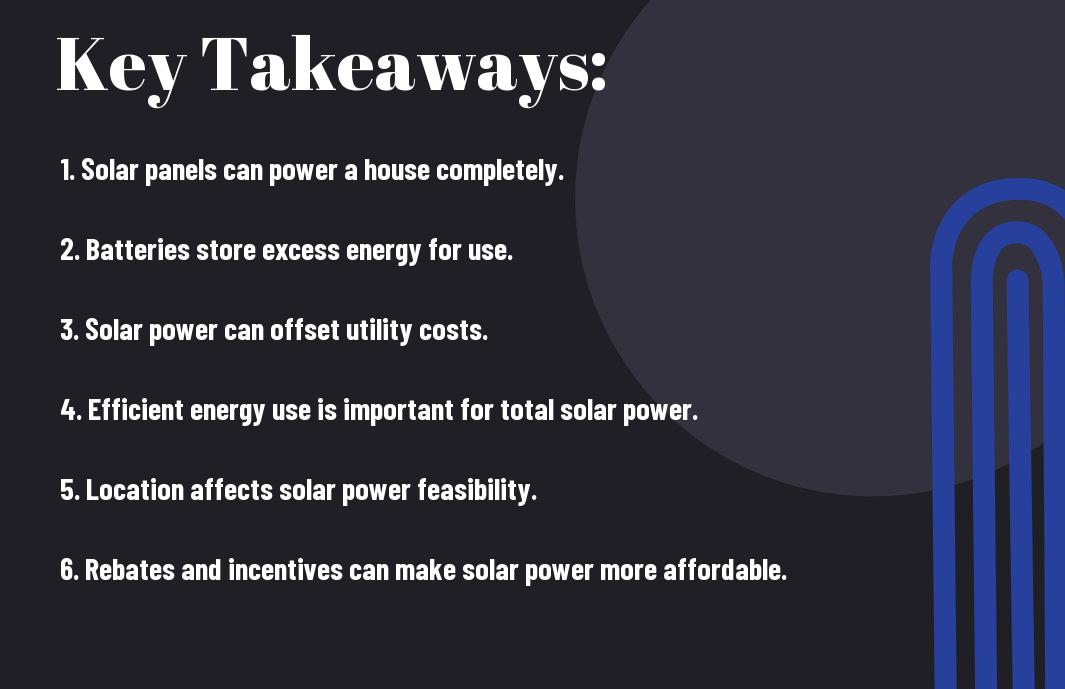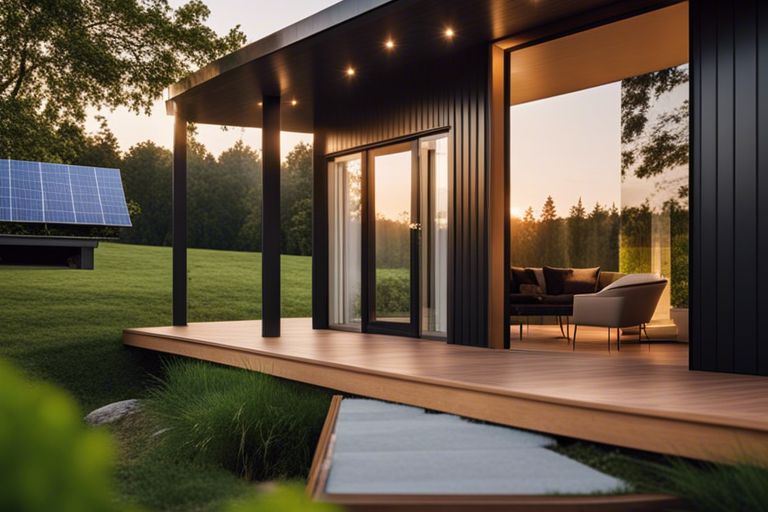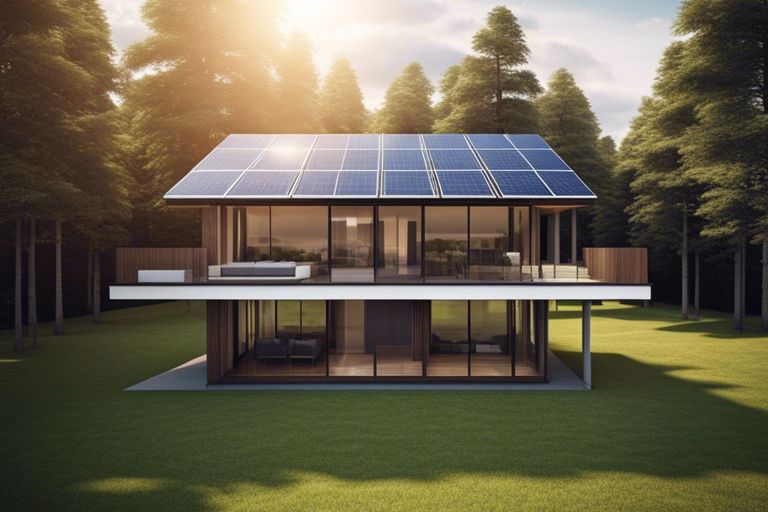Many homeowners like yourself may be curious about the possibility of powering your home entirely with solar energy. In this informative blog post, we will explore into the potential and challenges of achieving 100% solar power for your house. By exploring the benefits, costs, and technology involved, you will gain a deeper understanding of whether a fully solar-powered home is within your reach.

Key Takeaways:
- Feasibility: It is possible for a house to be 100% solar powered with the right planning and technology.
- Energy Storage: Battery storage systems are necessary to store excess energy generated during the day for use during nighttime or cloudy days.
- Government Incentives: Taking advantage of government incentives and rebates can help offset the initial cost of installing a solar power system for a house.

The Possibility of 100% Solar Power
Current State of Solar Energy Technology
Your quest for achieving a house powered solely by solar energy is not far-fetched. In fact, with the current state of solar energy technology, it is quite possible to cover the energy needs of a household entirely through solar power. Solar panels have become more efficient and affordable in recent years, making it easier for homeowners to switch to renewable energy sources.
Advancements in Energy Storage Systems
Any ambitious endeavor to power your house with 100% solar energy requires a reliable energy storage system. Thankfully, advancements in energy storage technology have made significant strides in recent times. Battery systems such as lithium-ion batteries are now capable of storing excess energy generated during the day for use during the night or on cloudy days, ensuring a continuous power supply for your household.
Solar batteries not only provide a way to store excess energy but also offer the flexibility to use stored energy during peak demand times when electricity rates are higher. This can help you save money on your electricity bill while reducing your carbon footprint.
Another Step Towards Sustainability
Solar power, combined with efficient energy storage solutions, represents another step towards achieving a sustainable and environmentally friendly way to power your home. By harnessing the sun’s abundant energy and storing it for later use, you can significantly reduce your reliance on traditional grid power while contributing to a cleaner planet for future generations.
Benefits of a 100% Solar Powered House
Environmental Impact
Some house environmental impacts are significant when you switch to solar power. By harnessing the energy of the sun, you greatly reduce your carbon footprint and reliance on fossil fuels. Solar power generates electricity without emitting greenhouse gases, helping to combat climate change and reduce air pollution. Additionally, it conserves water, a precious resource used in traditional electricity generation.
Economic Advantages
Some house economic advantages of solar power include long-term cost savings. While there is an initial investment in solar panels and equipment, you can significantly lower or eliminate your electricity bills over time. In some cases, you may even generate excess electricity that can be sold back to the grid, providing you with additional income.
Powered by the sun, your house becomes a self-sustaining source of energy, reducing your dependence on external providers and protecting you from fluctuations in energy prices. Additionally, solar panels increase the value of your property and can lead to potential tax incentives or rebates, making it a financially sound investment in the long run.
Increased Energy Independence
Impact your home’s energy independence by relying solely on solar power. By generating your electricity, you are less susceptible to power outages or disruptions in the central power grid. Your house can operate independently, even during emergencies or adverse weather conditions, ensuring a continuous power supply for your crucial needs.
Advantages of this increased energy independence include the peace of mind knowing that you have a reliable and sustainable energy source. By embracing solar power, you take control of your energy consumption and contribute to a more resilient and decentralized energy system, benefiting both you and the community.
Challenges to Achieving 100% Solar Power
Intermittent Energy Source
Solar energy is a fantastic renewable resource, but it does have its limitations. One of the main challenges with solar power is its intermittent nature. The sun doesn’t shine 24/7, which means that without a way to store excess energy, you may not have power when you need it most. To examine deeper into this topic, you can read more about it in the article 100 Percent Solar-Powered Home: What Does It Take?.
High Upfront Costs
Any journey toward achieving 100% solar power in your home will inevitably come with high upfront costs. Installing solar panels and the necessary equipment can be a significant investment. These initial expenses might deter some from fully committing to solar power. However, there are various financing options and incentives available to help make the transition more affordable.
Another point to consider regarding high upfront costs is the long-term savings solar power can provide. While the initial investment may seem substantial, over time, you can save money on your energy bills and even generate income by selling excess power back to the grid.
Energy Storage Limitations
One of the concerns with relying solely on solar power is energy storage limitations. Batteries used for storing excess energy generated during the day can only hold a certain amount. If you have high energy demands during the night or on cloudy days, you may find yourself running out of stored energy. To overcome this challenge, advancements in battery technology are continuously being made to improve storage capacity and efficiency.
One way to address energy storage limitations is by incorporating smart energy management systems. These systems can help optimize your energy usage, ensuring that you have power when you need it most. By strategically managing your energy consumption, you can make the most of the energy stored in your batteries.
Achieving 100% solar power in your home is a commendable goal that comes with its challenges. By understanding and tackling issues such as the intermittent nature of solar power, high upfront costs, and energy storage limitations, you can work towards creating a more sustainable and environmentally friendly living space.

Design and Installation Considerations
Many factors come into play when designing a 100% solar-powered house. One key consideration is the building orientation and layout. Designing your house with the proper orientation can optimize solar panel placement and energy production. Ensuring that your roof has enough space for solar panels and minimal shading is crucial for maximizing efficiency.
Building Orientation and Layout
Designing your house with the proper orientation can optimize solar panel placement and energy production. By aligning your roof towards the south, you can capture the most sunlight throughout the day. Additionally, minimizing obstructions such as trees or buildings that cast shadows on your roof can increase the effectiveness of your solar panels.
Roof Size and Shading
Considerations such as roof size and shading play a crucial role in determining the feasibility of a 100% solar-powered house. Your roof should have enough space to accommodate the necessary number of solar panels to meet your energy needs. Additionally, minimizing shading from surrounding structures or trees is important to ensure that your solar panels receive maximum sunlight exposure.
Plus, selecting the right inverter and solar panel combination is crucial for efficiently converting solar energy into usable electricity in your home.
Inverter and Panel Selection
Shading can affect the performance of your solar panels, causing potential energy losses. Choosing microinverters or power optimizers can help mitigate shading issues by optimizing the performance of each panel individually. Additionally, selecting high-quality panels with efficient energy conversion rates can maximize the electricity output of your system.
Net Metering and Grid Connection
How Net Metering Works
To ensure that your house can be 100% solar powered, you need to understand how net metering works. Any excess electricity generated by your solar panels that you do not use immediately is sent back to the grid. This surplus energy is tracked by your utility company, and you receive credits for it.
Grid Connection Options
Options for grid connection include a bidirectional meter that allows electricity to flow both to and from your home. This meter records the amount of electricity you draw from the grid when your solar panels are not producing enough energy, as well as the surplus energy you send back. Grid-tied systems are another option, allowing you to remain connected to the grid while still benefiting from solar power.
Grid connection is necessary for ensuring a consistent power supply, especially when your solar panels are not generating enough electricity. By being connected to the grid, you can seamlessly switch between solar-generated power and grid electricity as needed.
Utility Company Involvement
The utility company plays a crucial role in enabling your house to be 100% solar powered. The company not only monitors your energy production and consumption but also manages the net metering process. They ensure that you receive fair compensation for the excess electricity you supply to the grid.
With the support of your utility company, you can effectively harness solar power to meet your energy needs and even contribute to a more sustainable energy future. Their involvement helps streamline the process of transitioning to renewable energy sources like solar power.
Real-World Examples and Success Stories
Residential Solar Power Successes
To illustrate just how successful residential solar power can be, consider the case of the Smith family in California. After installing solar panels on their roof and making energy-efficient upgrades to their home, the Smiths were able to generate more electricity than they consumed. This not only eliminated their electricity bills but also allowed them to earn credits by selling excess energy back to the grid. With careful planning and smart energy usage, you too can achieve a similar level of success with a 100% solar-powered home.
Commercial and Industrial Applications
Real-world examples have shown that large-scale commercial and industrial facilities can also benefit greatly from solar power. By investing in solar panels and other renewable energy technologies, businesses have been able to significantly reduce their operating costs and carbon footprint. Incorporating solar power into your company’s energy strategy can not only lead to cost savings but also enhance your brand image as a socially responsible and environmentally conscious organization.
Commercial and industrial applications of solar power have seen widespread success across various industries, from manufacturing plants to office buildings. By harnessing the power of the sun, businesses can secure long-term energy savings and contribute to sustainability efforts.
Community-Based Solar Initiatives
Community-based solar initiatives have been gaining momentum in recent years, offering a shared approach to solar power generation. These programs allow multiple households or businesses to collectively invest in a solar array and benefit from the clean energy it produces. By participating in a community solar project, you can support renewable energy development in your area and enjoy the advantages of solar power without the need for individual rooftop installations.
On a larger scale, community-based solar initiatives have the potential to transform the way neighborhoods and towns source their energy. By pooling resources and working together towards a common goal, communities can promote sustainability and resilience while reducing their reliance on traditional energy sources.
Summing up
Upon reflecting on the question “Can a House be 100% Solar Powered?” it is clear that while achieving complete solar power for a house may be a challenging goal, it is definitely possible with the advancements in technology and a commitment to sustainability. By utilizing a combination of solar panels, battery storage, energy-efficient appliances, and smart home technologies, you can significantly reduce your carbon footprint and potentially eliminate the need for traditional power sources.
Q: Can a house be 100% solar powered?
A: Yes, a house can indeed be 100% solar powered. With advancements in solar technology and battery storage, it is now possible to generate and store enough solar energy to power a home 24/7.
Q: What are the benefits of having a 100% solar powered house?
A: Some benefits of having a 100% solar powered house include lower electricity bills, reduced environmental impact, energy independence, and potentially being eligible for government incentives or rebates for using renewable energy sources.
Q: Is it expensive to convert a house to be 100% solar powered?
A: While the initial cost of installing a solar power system can be significant, long-term savings on electricity bills usually make up for it. Additionally, there are financing options, tax credits, and rebates available that can help offset the upfront costs of going solar.
